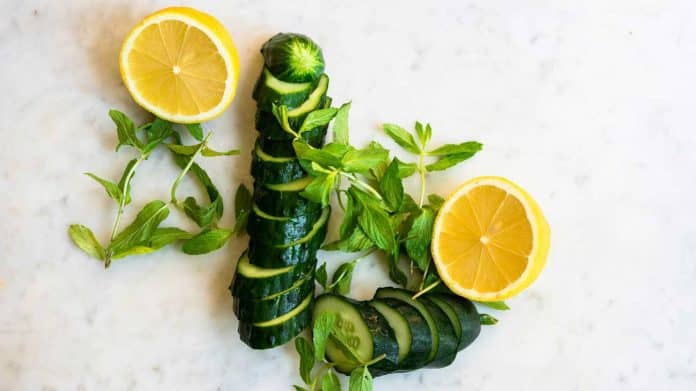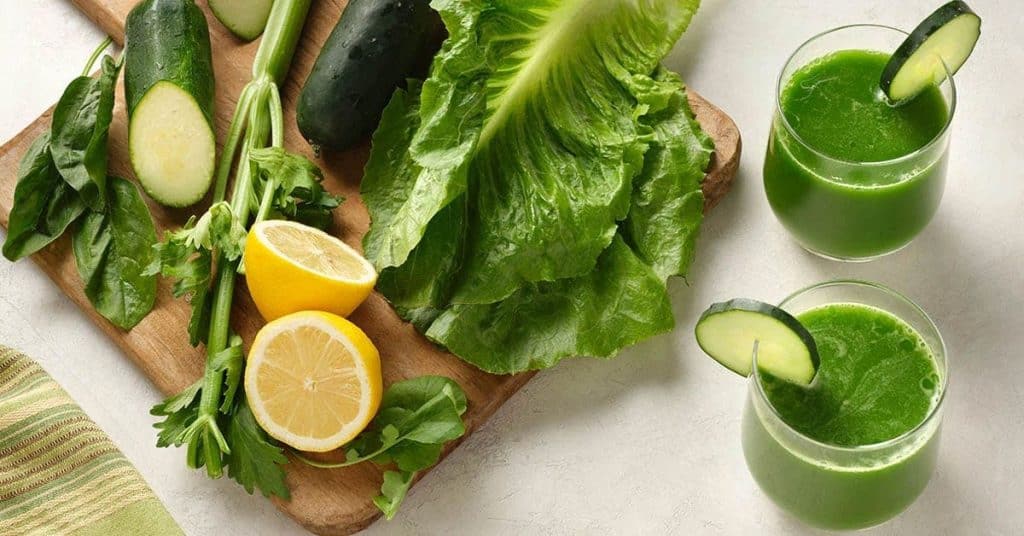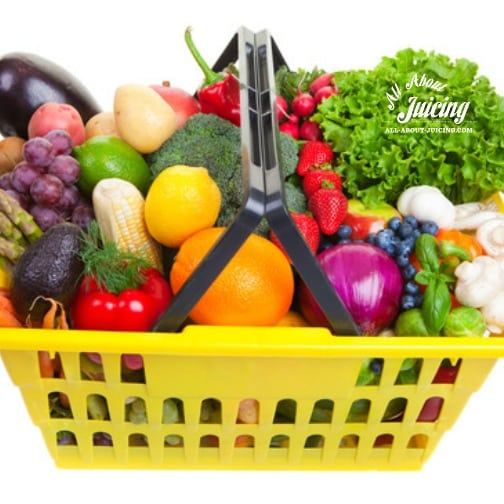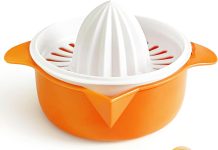Juicing has become an incredibly popular way to consume fruits and vegetables, delivering a burst of nutrients in a refreshing and vibrant form. But with an abundance of produce options, it can be overwhelming to know which ones are the best for juicing. Luckily, we’ve gathered expert advice to help you navigate the colorful world of juicing. From tangy citrus fruits to leafy greens, this article will guide you on selecting the ideal fruits and vegetables to juice, ensuring that every sip is packed with flavor and wellness benefits.
This image is property of images.prismic.io.
Review contents
Choosing the Right Fruits and Vegetables
When it comes to juicing, it’s important to choose the right fruits and vegetables that not only taste delicious but also provide essential nutrients for our bodies. Here are a few guidelines to consider when selecting produce for juicing.
Consider Nutritional Value
One of the key factors to take into account when choosing fruits and vegetables for juicing is their nutritional value. Different fruits and vegetables offer a wide range of vitamins, minerals, and antioxidants that are crucial for maintaining good health. For example, oranges are rich in vitamin C, apples provide fiber and flavonoids, and leafy greens like spinach or kale are packed with iron and calcium. By diversifying the fruits and vegetables in our juices, we ensure that we are reaping the benefits of a wide spectrum of nutrients.
Texture and Taste
Another important aspect to consider when selecting fruits and vegetables for juicing is their texture and taste. Some fruits and vegetables, such as watermelon or cucumber, have a high water content, making them great choices for adding hydration to our juices. In contrast, apples and carrots offer a more fibrous texture, providing a satisfying mouthfeel. When it comes to taste, fruits like berries or pineapples add a natural sweetness to juices, while leafy greens and celery offer a more subtle and refreshing flavor. Experimenting with different combinations can help us find the perfect balance of texture and taste in our juices.
Seasonal Availability
To ensure the freshest and most flavorful juices, it’s a good idea to consider seasonal availability when choosing fruits and vegetables for juicing. Fruits and vegetables that are in season are usually at the peak of their flavor and often more affordable. Moreover, seasonal produce tends to provide a more diverse array of nutrients. For example, in the summer, we can enjoy juicy watermelon, ripe berries, and refreshing cucumbers. In the fall, apples, pears, and leafy greens like kale or spinach are abundant. By embracing seasonal ingredients, we not only support local farmers but also nourish our bodies with the best nature has to offer.
Best Fruits for Juicing
Now that we understand the important factors to consider when choosing fruits for juicing, let’s explore some of the best options to include in our juice recipes.
Oranges
Oranges are a classic choice for juicing due to their high vitamin C content and refreshing taste. They add a burst of citrusy flavor to any juice and can be easily combined with other fruits and vegetables to create delicious concoctions. Additionally, oranges provide natural sweetness without overpowering the overall flavors of the juice.
Apples
Apples are not only delicious but also incredibly versatile in juice recipes. They offer a balance of sweetness and tartness, making them a great base for any juice. Apples also provide a good source of fiber and antioxidants, promoting a healthy digestive system. Whether combined with leafy greens or other fruits, apples add a pleasant flavor and natural sweetness to our juices.
Pineapples
Pineapples are not only tropical and delicious but also a fantastic addition to any juice. They contain bromelain, an enzyme known for its anti-inflammatory properties, making pineapples a great choice for those looking to boost their immune system. The sweet and tangy taste of pineapples adds a refreshing twist to any juice, pairing well with leafy greens or other citrus fruits.
Berries
Berries, such as strawberries, blueberries, and raspberries, are not only vibrant and visually appealing but also offer a myriad of health benefits. They are packed with antioxidants that help fight against free radicals and inflammation in our bodies. Berries add a natural sweetness to our juices and can be easily paired with other fruits like oranges or apples. Their vibrant flavors create a delightful and refreshing juice experience.
Watermelon
Watermelon is a summer favorite that is not only incredibly hydrating but also a great choice for juicing. It has a high water content, making it ideal for quenching our thirsts on hot days. Watermelon is also rich in lycopene, an antioxidant that has been linked to heart health. Its naturally sweet and juicy flavor makes watermelon a delicious choice on its own or combined with other fruits and vegetables for a refreshing summer drink.
This image is property of cdn-fhofj.nitrocdn.com.
Best Vegetables for Juicing
Vegetables are a crucial component of a healthy juicing routine. They provide us with essential vitamins, minerals, and fiber, all while adding a refreshing and nutritious twist to our juices. Here are some of the best vegetables to include in our juicing recipes.
Leafy Greens
Leafy greens, such as spinach, kale, and Swiss chard, are nutritional powerhouses and should be staples in any juicer’s repertoire. They are low in calories but rich in iron, calcium, and other essential nutrients. Leafy greens add a natural earthiness and slight bitterness to juices, which can be balanced out with sweeter fruits or vegetables. Including a handful of leafy greens in our juice not only enhances its nutritional value but also contributes to a vibrant green color.
Celery
Celery is an unsung hero in the world of juicing. It offers a refreshing and crisp taste while being incredibly hydrating. Celery is low in calories and high in fiber, making it an excellent choice for those looking to support weight loss or improve digestion. Its distinct flavor pairs well with both fruits and vegetables, adding a unique twist to our juices.
Cucumber
Cucumbers are a hydrating vegetable that adds a refreshing and cooling element to our juices. They are rich in antioxidants and can help flush out toxins from our bodies. Cucumbers have a subtle and mild flavor, making them an ideal base for juices. They pair well with fruits and vegetables alike, providing a light and refreshing juice experience.
Carrots
Carrots are not only known for their vibrant orange color but also for their high vitamin A content. They offer a slightly sweet and earthy taste, adding depth and complexity to our juices. Carrots also provide us with antioxidants and essential nutrients. Whether combined with leafy greens or fruits, carrots are a versatile vegetable that complements a wide range of flavors.
Beets
Beets may not be as commonly associated with juicing as other vegetables, but their rich color and unique flavor make them a great addition to our juice recipes. Beets are packed with essential nutrients such as folate, potassium, and iron. They have a slightly earthy and sweet taste that adds a robust flavor to our juices. Beet juice can be enjoyed on its own or combined with other fruits and vegetables for a nutrient-rich, vibrant drink.
This image is property of images-prod.healthline.com.
Combining Fruits and Vegetables
Now that we have explored the best fruits and vegetables for juicing, let’s dive into the art of combining them to create delicious and nutritious juice blends.
Balancing Sweetness and Bitterness
When creating juice recipes, it’s important to strike a balance between sweetness and bitterness. While fruits naturally provide sweetness to juices, some vegetables, such as leafy greens or beets, can add a slight bitterness. To create a harmonious flavor profile, it’s essential to experiment with ingredient ratios. Adding a sweet fruit, like an apple or orange, can help offset the bitterness and create a more palatable juice. Start with small amounts of bitter vegetables and gradually adjust the ratios to find the perfect balance for your taste buds.
Creating Unique Flavor Profiles
Combining fruits and vegetables in our juices allows us to create unique flavor profiles that suit our individual preferences. For example, combining oranges and carrots results in a sweet and tangy juice with a vibrant orange color. Adding berries to leafy greens creates a refreshing and antioxidant-rich concoction. Don’t be afraid to get creative with your combinations and try new flavors. Juicing is all about exploring different tastes and finding your own favorite blends.
This image is property of cdn2.stylecraze.com.
Tips for Juicing
To ensure a successful and enjoyable juicing experience, here are some helpful tips to keep in mind.
Wash and Prepare Produce Properly
Before juicing any fruits or vegetables, it’s crucial to wash them thoroughly to remove any dirt or potential contaminants. Use a brush or your hands to scrub firm produce like apples or carrots. Leafy greens should be rinsed thoroughly to remove any grit. Additionally, make sure to remove any non-edible parts, such as seeds or pits, before juicing. Properly preparing the produce ensures that we are consuming clean and safe juices.
Use a High-Quality Juicer
Investing in a high-quality juicer can make a significant difference in the quality of our juices. Centrifugal juicers, masticating juicers, and cold-press juicers are some of the common types of juicers available. Consider your preferences, budget, and desired juice consistency when choosing the right juicer for you. High-quality juicers extract more juice from the produce, resulting in a higher yield and better overall experience.
Experiment with Ingredient Ratios
Juicing allows us to experiment and personalize our recipes to our own taste preferences. Don’t be afraid to play around with ingredient ratios to find the perfect flavor balance. Start with small amounts of new ingredients and gradually increase or decrease them based on taste. Feel free to add more of a particular fruit or vegetable if you want a stronger flavor or adjust the sweetness or bitterness according to your liking. Juicing is a fun and creative process, so embrace the opportunity to experiment and discover new combinations.
Drink Immediately for Maximum Freshness
To enjoy the maximum freshness and nutrient content, it’s best to consume our juices immediately after juicing. Exposure to air and light can cause juices to degrade and lose their nutritional value. If consuming the juice right away is not possible, store it in an airtight container in the refrigerator for a short period. However, keep in mind that the longer the juice sits, the more it will oxidize, affecting its taste and freshness. Drinking our juices as soon as possible guarantees the highest quality and optimal nutritional benefits.
In conclusion, choosing the right fruits and vegetables for juicing is essential to create delicious, nutritious, and refreshing drinks. Considering the nutritional value, taste, texture, and seasonal availability of the produce can help us make informed choices. By incorporating a variety of fruits like oranges or berries and vegetables like leafy greens or carrots, we can enjoy a wide range of health benefits and flavors. Experimenting with ingredient ratios and combinations allows us to tailor our juices to our personal preferences. Lastly, following proper preparation techniques, investing in a high-quality juicer, and consuming our juices immediately ensure the highest level of freshness and maximum nutritional value. So grab your favorite fruits and vegetables, fire up that juicer, and embark on a delightful and healthy juicing journey!
This image is property of www.all-about-juicing.com.






































